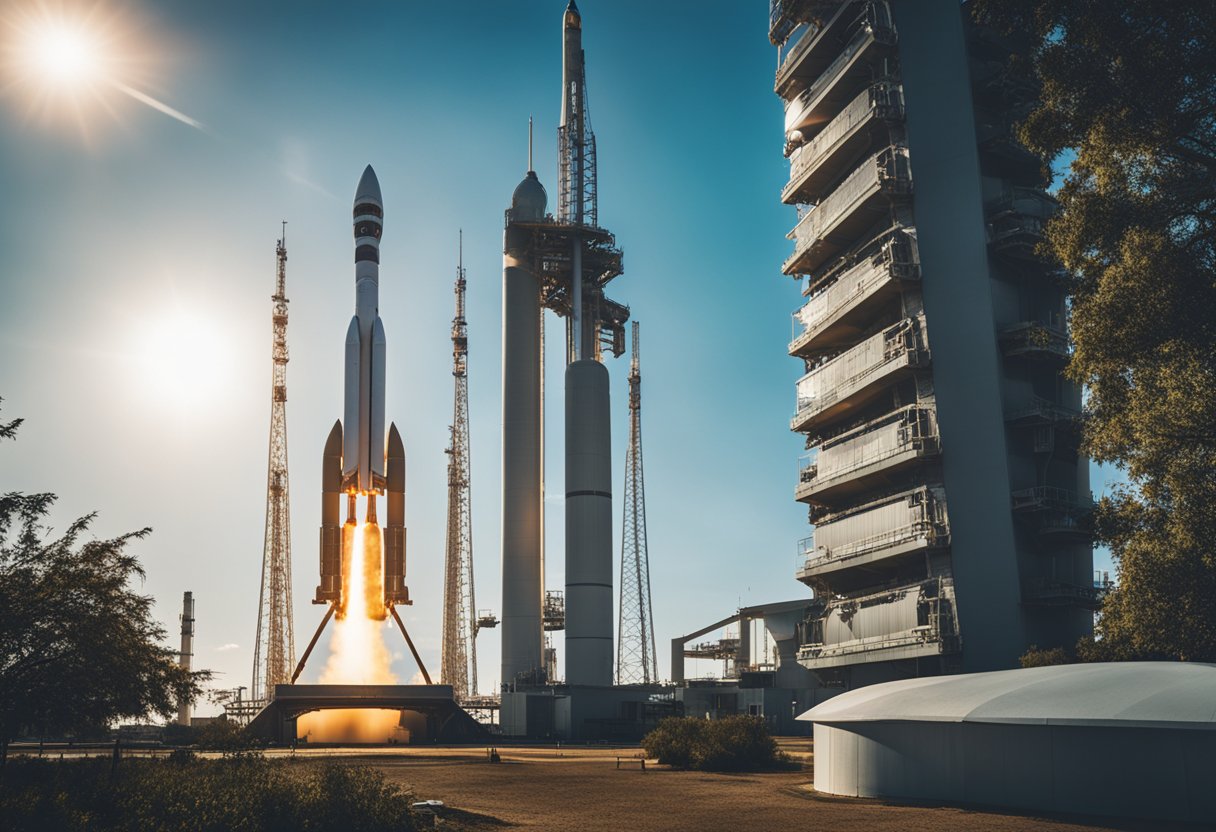
Space Tourism Launch Sites: Space tourism has left the realm of science fiction and entered the reality of today’s adventurous traveller. We’re witnessing the dawn of a new era where outer space is accessible not just to astronauts, but to anyone with the dream of gazing at Earth from the heavens above. As pioneers in the industry develop and hone their technology, various launch sites around the world are positioning themselves to be gateways to the stars. These sites are not only engineering marvels but also symbols of human aspiration reaching for the cosmos.
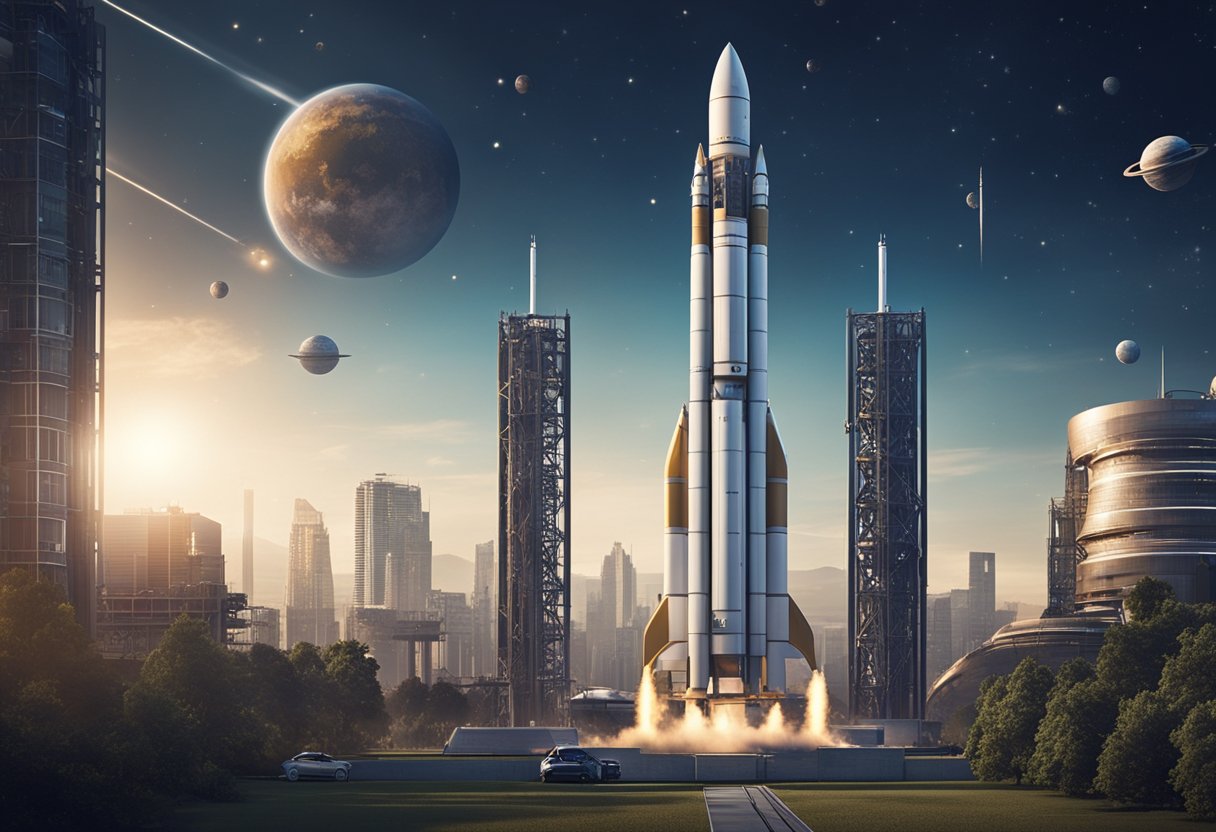
As we explore the selection of primary launch sites, it is fascinating to see how each location offers unique experiences. From America’s Space Coast, with its rich launch history, to the cutting-edge facilities at Spaceport America, space tourism is becoming a tangible reality. Understanding the intricacies of these locations is essential for planning one’s journey into space. The planning involves knowing about the launches, the types of vehicles used, and the incredible experience that awaits spectators. In addition, we must consider the broader implications, such as the strategic importance of global spaceports, financial considerations, and the environmental and legal aspects of leaving our planet.
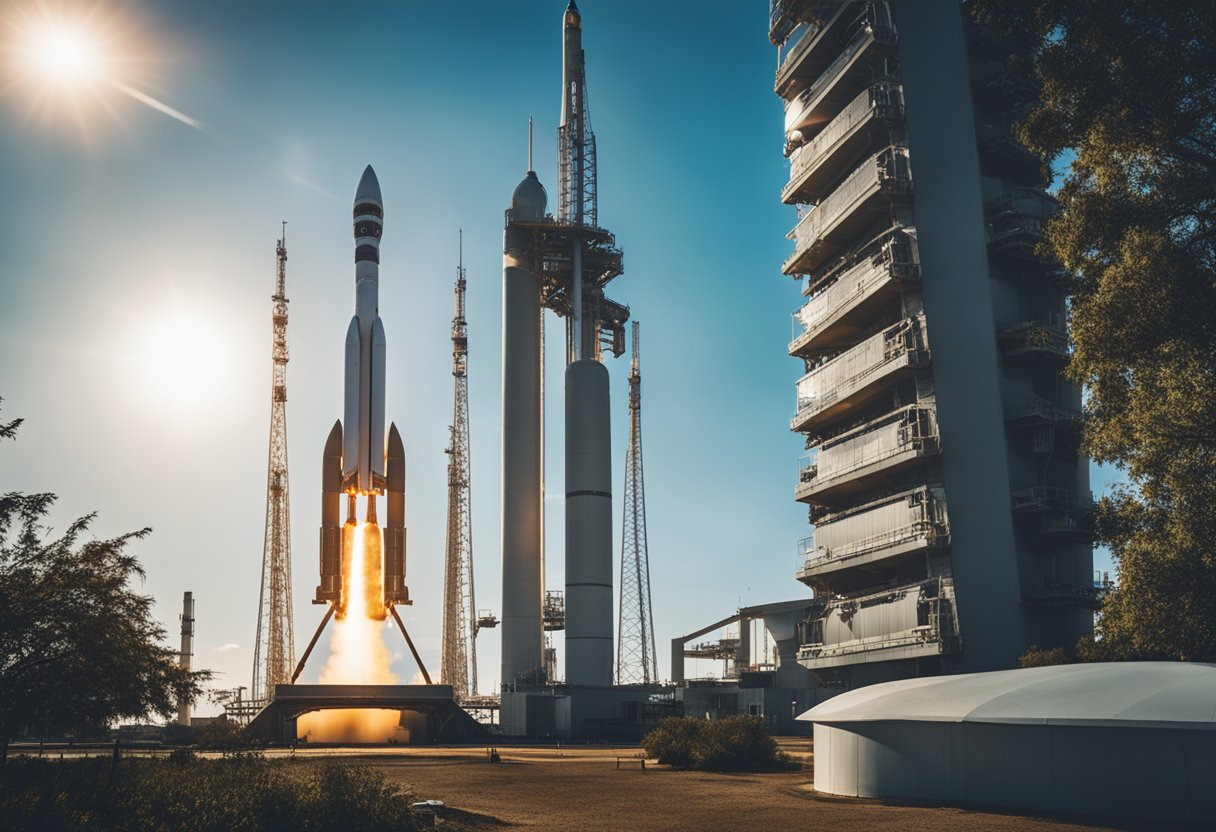
We will explore the rapid development of space tourism and the key organisations driving this revolutionary venture.
The concept of space tourism has transitioned from a speculative dream to a tangible reality. Initially, Russian space agency, Roscosmos, provided the only opportunities for private citizens to travel to space. Over time, NASA, once hesitant to involve tourists, has recognised the potential of space tourism. Our understanding of space travel has expanded, facilitating the creation of SpaceVoyageVentures.com, a repository of space tourism’s current offerings and future possibilities.
The landscape of space tourism has become more diverse with multiple private space companies advancing the industry. SpaceX has emerged as a prominent figure, developing technologies that could enable not just professionals but also tourists to experience space. Meanwhile, Blue Origin and Virgin Galactic have been focusing on suborbital flights, offering brief but spectacular forays into the edge of space for paying customers. These companies are innovating and competing to make space tourism a regular occurrence for the public.
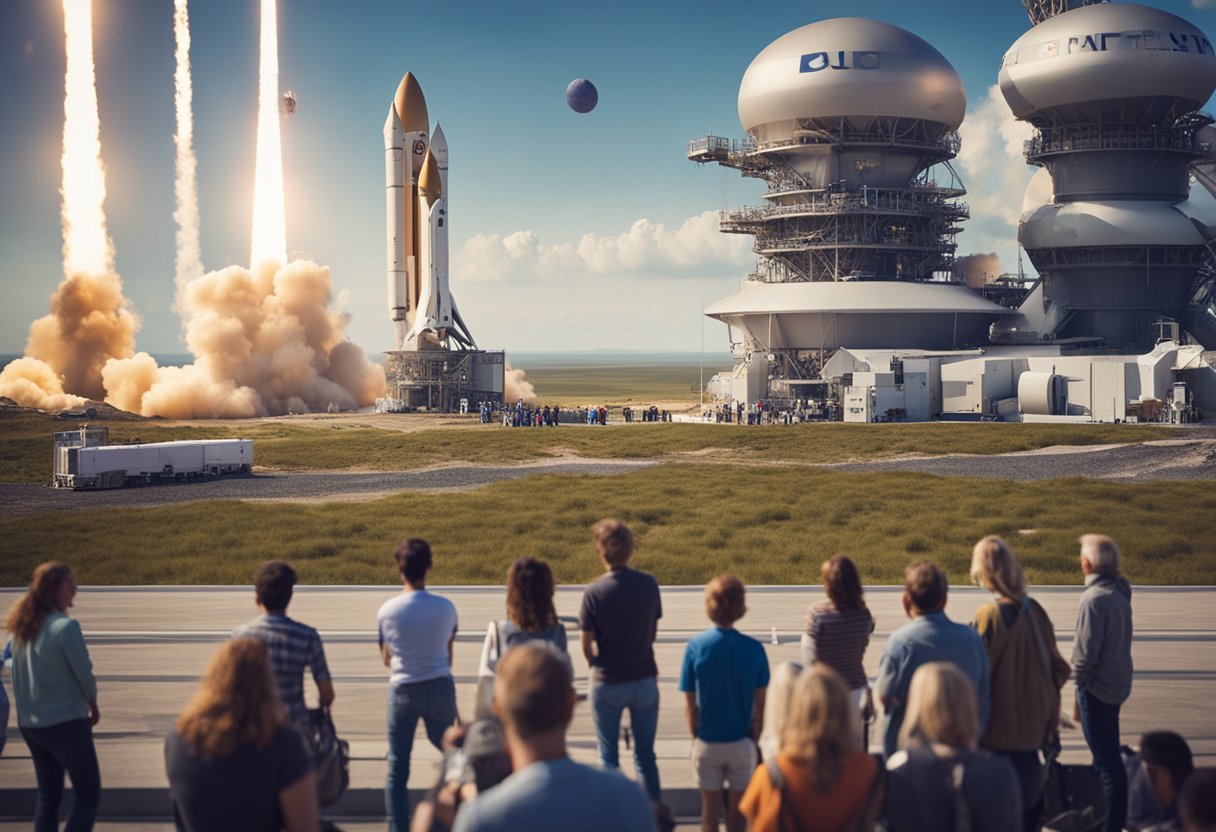
In recent years, various sites have become pivotal in launching tourists into space. From the historic platforms in Florida to the expansive territories in Kazakhstan, these locations are at the forefront of the burgeoning space tourism industry.
Situated on the Space Coast of Florida, the Kennedy Space Center stands as a prominent hub for space tourism. We recognise its iconic launch pads that have served as the starting point for numerous space shuttle missions and now, commercial spaceflights.
Also located in Florida, the Cape Canaveral Space Launch Complex boasts a rich history of aerospace achievements. It has adapted to the new era of space travel, hosting launches that have paved the way for public space tourism.
Over in California, Vandenberg Air Force Base provides a strategic Pacific coast launch site. It’s optimal for a variety of orbits, contributing to its selection for certain commercial space tourism launches.
The realm of space tourism extends beyond the US, with the Baikonur Cosmodrome in Kazakhstan playing a crucial role in Russia’s space endeavours. As the world’s first and largest operational space launch facility, it has served as a gateway to the cosmos for several space tourists.
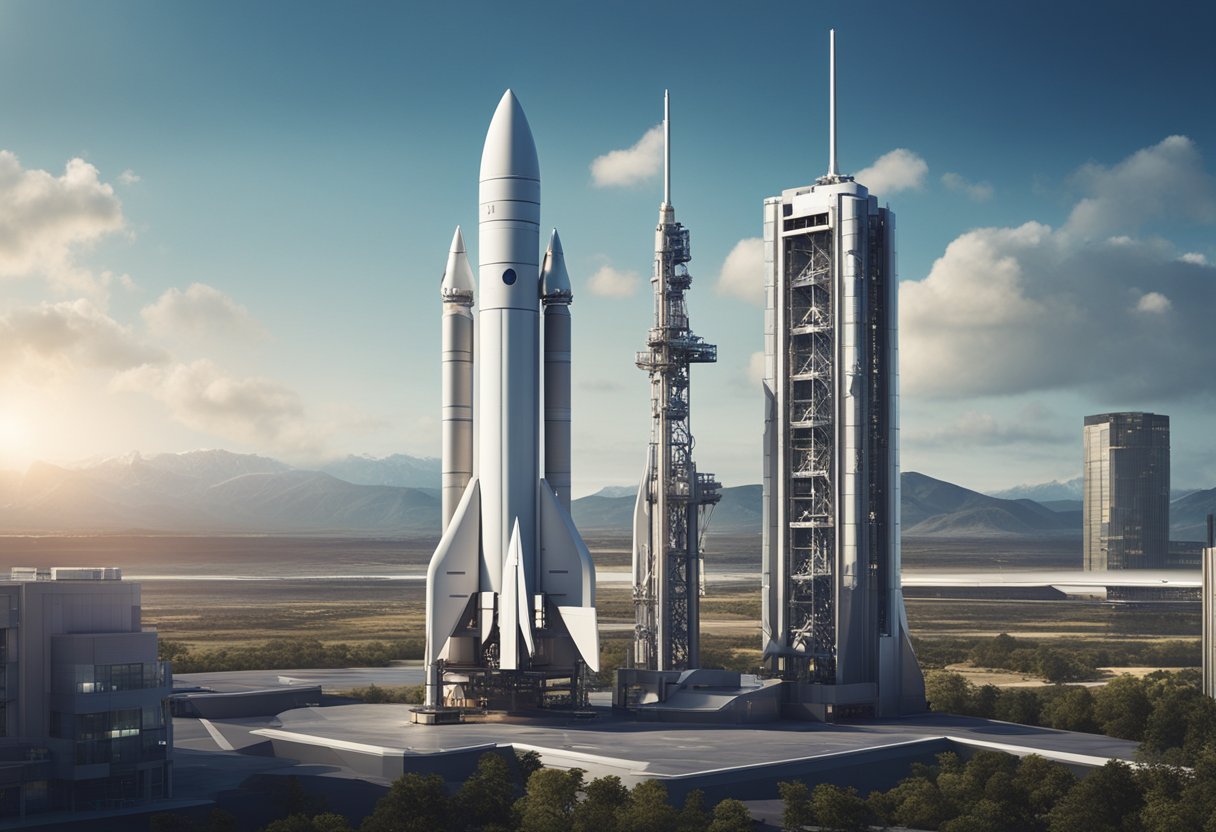
When planning your space tourism experience, it’s essential to approach the process methodically, ensuring that every detail of your trip and ticket booking is meticulously orchestrated for a truly otherworldly adventure.
Securing your passage to the stars begins with booking your ticket. We recommend visiting early adopter websites such as SpaceVoyageVentures.com, which provide valuable insights into the variety of voyages currently on offer, as well as those on the cusp of availability. It is vital to assess all the available options, from suborbital experiences to orbital hotels, and make a decision based on your own aspirations and budget. Keep in mind that space tourism is still in its infancy, so staying informed about the latest developments is crucial to ensure that you secure your seat aboard one of these pioneering journeys.
Once your ticket is booked, our trip preparations must be thorough. This includes:
Medical Clearance: Obtaining a clean bill of health through a comprehensive medical assessment is often mandatory, as space travel requires peak physical and mental condition.
Training: Depending on the programme, you might need to undergo specific training courses to familiarise yourself with the conditions of space travel, including weightlessness and confined spaces.
Logistics: Planning the logistics of your journey involves more than just getting to the launch site. It encompasses the finer details, such as accommodations prior to launch and transportation arrangements.
Documentation: Ensuring your travel documents, including passports and any necessary visas, are up to date and in line with the requirements of the country hosting the launch site.
It’s imperative that we attend to each of these elements to guarantee a smooth take-off into this new frontier of tourism.
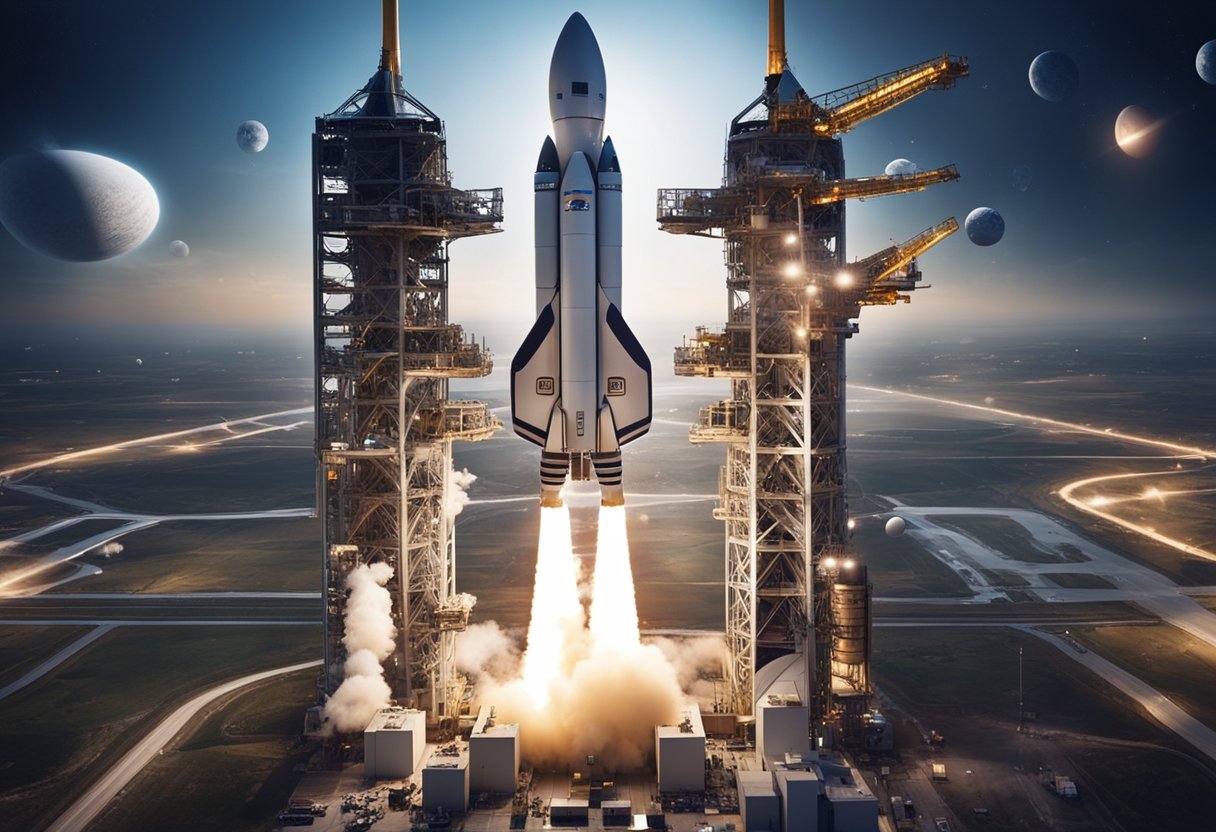
In this section, we’ll explore the key aspects of space tourism related to the different types of rockets utilised for space travel and the planned schedule for upcoming launches, ensuring you’re well-informed on the latest in space exploration.
Rockets are the backbone of space travel and come in various forms designed for different mission profiles. Currently, vehicles like New Shepard, developed by Blue Origin, underscore the advancement in rocket technology with their fully reusable sub-orbital configurations. These rockets are pivotal for space tourism, as they are engineered to carry passengers just beyond the Kármán line—the boundary between Earth’s atmosphere and outer space.
For orbital flights, which require more power and advanced technology due to the higher velocity and distance from Earth, companies like SpaceX have developed the Falcon line of rockets, one of the most recognised being the Falcon 9. This particular rocket is notable for its reusability and its role in propelling spacecraft to the International Space Station. Other significant tech includes innovations in rocket engines, materials, and safety systems, all of which are crucial for ensuring the success of space tourism ventures.
Staying abreast of the launch window is essential for anyone interested in space tourism. You can find a comprehensive rocket launch schedule at the Kennedy Space Center’s official site, which details not only the timings but also the specific missions and vehicles involved.
Upcoming launches are determined by several factors, including orbital mechanics, weather conditions, and vehicle readiness. These factors can dictate the frequency of launches and can lead to shifts in the schedule. For instance, optimal launch windows for missions to celestial bodies like Mars come around roughly every two years, due to Earth’s alignment with the Red Planet. Remember to check the schedule regularly for the most up-to-date information, as it can change frequently.
For those eager to witness history in the making, there are numerous spots along Florida’s Space Coast that offer outstanding views of the roaring ascend of rockets into the sky. Among them, Alan Shepard Park is one of the top locations recommended for launch viewing, combining clear sightlines with the natural beauty of the coast.

As we explore the burgeoning era of space tourism, the spectator experience remains a pivotal aspect of space launches. Our focus here is to provide insights into the best locations for witnessing these historic events, the comforts and facilities available, and the important regulations in place to ensure safety.
Cocoa Beach Pier: Situated in close proximity to the launch pads, Cocoa Beach Pier offers an unparalleled vantage point. On launch day, spectators gather here to witness the awe-inspiring sight as rockets ascend into the sky.
When it comes to lodging, there’s a plethora of options available to suit different preferences and budgets. Titusville has an array of hotels, with many providing special packages for launch events.
Safety is paramount. As such, there are strict regulations one must adhere to when attending a space launch.
For further details on space tourism and launch viewing, consider visiting SpaceVoyageVentures.com for comprehensive information and guidance.

As space tourism develops, we observe a surge in media interest, with extensive coverage on various platforms. Enhanced accessibility to these events for the public is being facilitated through live streams and dedicated media resources.
We’ve witnessed a notable increase in television coverage for space-related events. Networks often broadcast launches live, providing viewers an opportunity to watch historic moments as they occur. For instance, Spaceflight Now stands out as a pivotal platform, offering comprehensive live coverage of spaceflight events. Additionally, many space agencies and private companies stream launches on their websites and through social media channels, making space launches accessible to a global audience.
The dissemination of space travel information is becoming more prevalent across various media platforms. New websites like SpaceVoyageVentures.com function as hubs for information on space tourism, featuring articles about current and potential future space trips. They offer insights, articles, and updates on the progress of space tourism, catering to enthusiasts and potential consumers alike. The availability of these resources ensures that information on space tourism is available for those who are keen to follow the developments in this exciting industry.
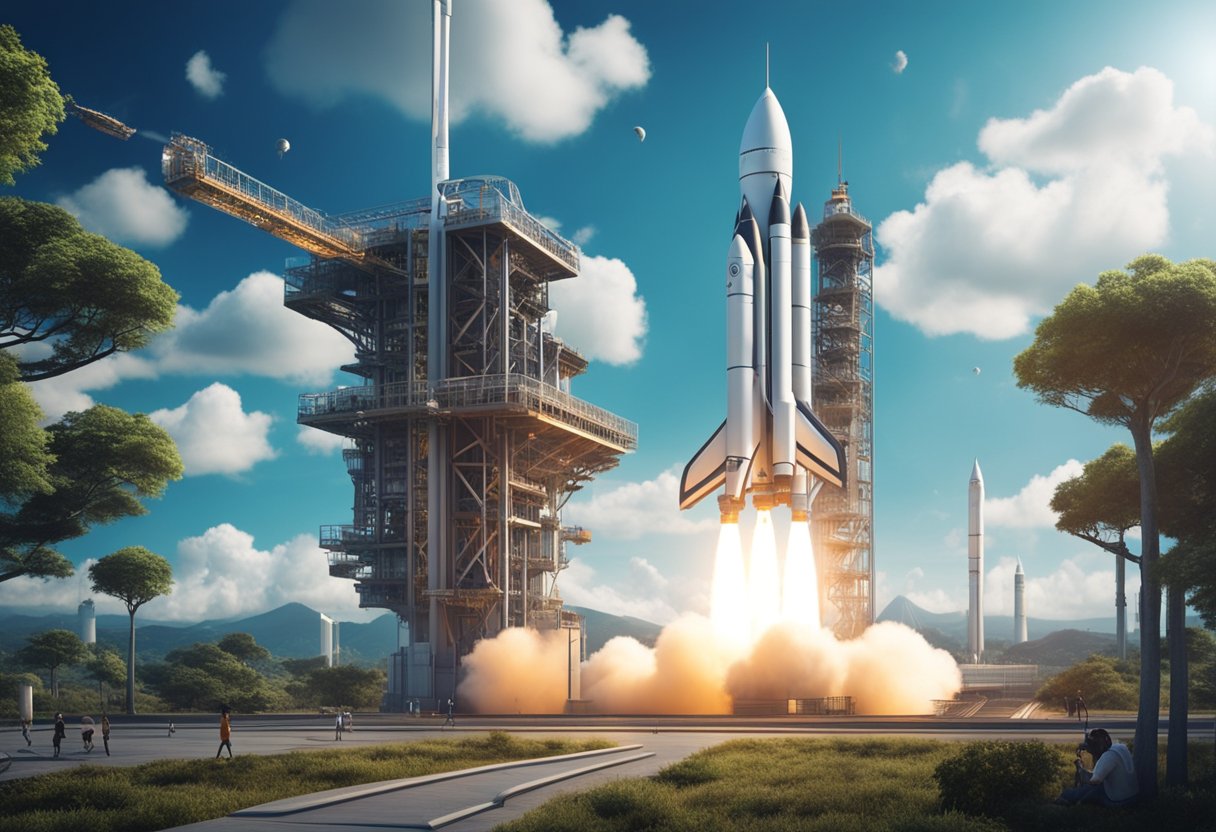
As gateways to the final frontier, global spaceports are not merely launch facilities; they’re pivotal in shaping the future of space travel, international relations, and geopolitical dynamics.
We observe a growing trend in multinational partnerships around spaceports, where countries share resources and expertise to maximise technological and economic benefits. The International Space Station stands as a testament to what international collaboration can achieve, orbiting Earth as a symbol of unity and scientific progress. Similarly, nations like India and Japan have been active participants in global space endeavours, leveraging their spaceports as hubs for joint missions and research initiatives.
Commercial activities are rapidly transforming spaceports into competitive business entities. With the advent of space tourism, sites like those promoted on SpaceVoyageVentures.com showcase the potential for public engagement in space experiences, highlighting the economic implications. Meanwhile, the Federal Aviation Administration in the United States plays a crucial regulatory role, underpinning the safe and efficient development of private space ventures. In the global theatre, China’s advancements in space technologies signify its political and technological ascent, positioning its spaceports as key assets in a broader strategy for international stature and influence. We’re witnessing a dynamic landscape where every spaceport, from the Guiana Space Centre to Tanegashima Space Center, is a critical node in the mesh of international spacefaring activities.
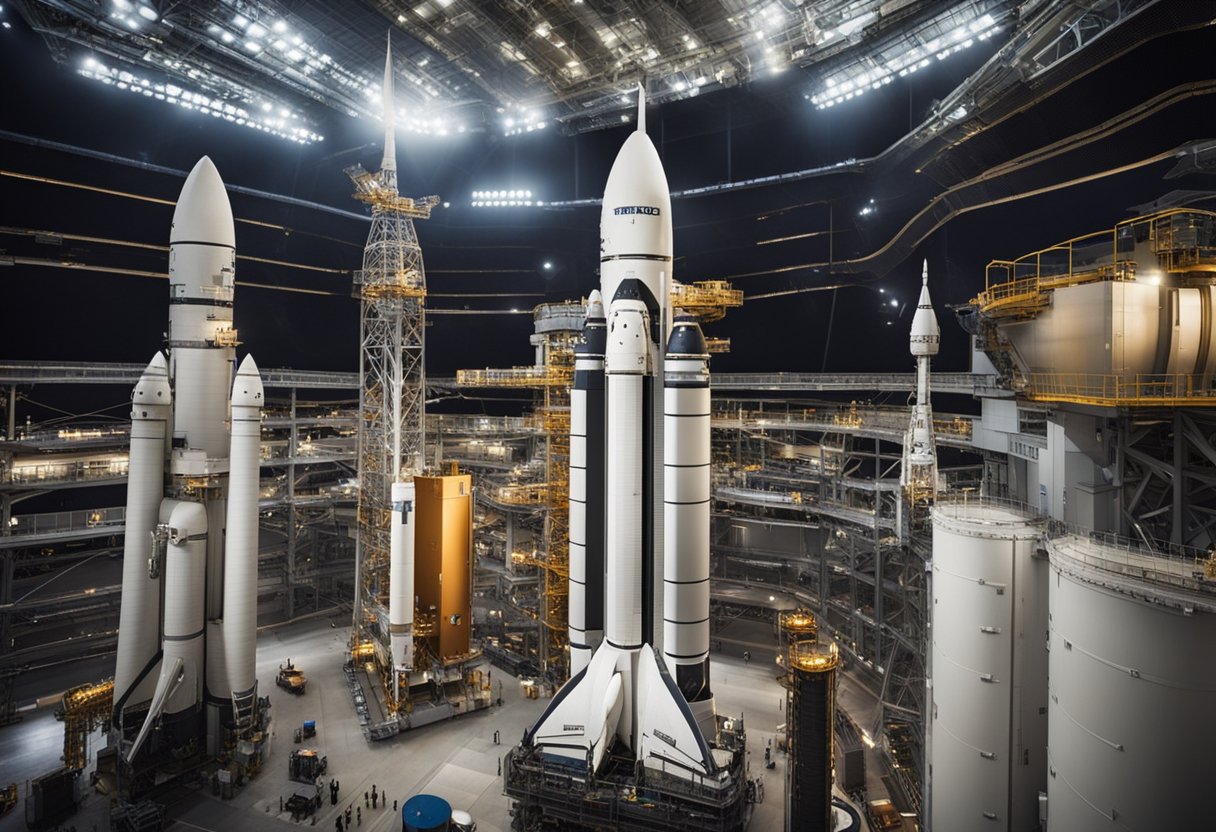
When we consider the burgeoning industry of space tourism, the financial aspects are as vast as space itself. The price of a ticket to the stars and the economic ripples it creates are critical for both consumers and the market at large.
Space tourism is no trivial expense; ticket prices for a seat on a suborbital flight are reported to be as high as between $200,000 and $300,000. Companies such as Virgin Galactic and Blue Origin are at the forefront, offering experiences that are, as of now, geared towards individuals with significant financial means.
For a more detailed breakdown, prospective space tourists can use cost calculator tools available on platforms like SpaceVoyageVentures.com. These tools help in estimating the overall expenditure, including training and accommodation, providing a clearer financial picture for interested parties.
The economic impact of space tourism extends far beyond individual ticket sales. Analysts predict the global market to potentially reach over $800 billion by 2030. This projected growth can also factor in the technological advancements and the allure for adventure travellers, which expands the market.
Other market variables include the influence of high net-worth individuals and the ongoing research into making space tourism a sustainable venture. For a deeper understanding of the market dynamics, SpaceVoyageVentures.com provides market analysis reports that offer a comprehensive view of space tourism’s influence on the global economy.

As we examine the burgeoning field of space tourism, it’s vital that we consider both the ecological effects and the legal frameworks guiding launch sites. These factors are central to the sustainable growth of space tourism.
The advent of space tourism introduces new environmental concerns particular to launch sites. Research suggests that rocket launches can yield significant greenhouse gas emissions and leave behind harmful debris in both terrestrial and space environments. One investigation found that space travellers could be responsible for approximately 2000-4600 GCE per hour of global warming impacts.
The sites used for launching tourists into space must manage their ecological footprint meticulously. SpaceVoyageVentures.com underscores that minimising environmental damage is as much a part of responsible space tourism as the experience of the travellers themselves.
The legal constructs governing space tourism are still in a nascent stage. In the United States, the Federal Aviation Administration (FAA) plays an essential role in the regulation of commercial space flight. Liabilities, safety standards, and environmental compliance are all aspects scrutinised and legislated by the FAA to ensure public safety and environmental preservation.
For space tourism to advance, our regulatory frameworks must evolve in tandem with technological innovations. We have entered an era where an international legal consensus on space tourism is becoming increasingly necessary to address the complex jurisdictional and liability issues that span nations.
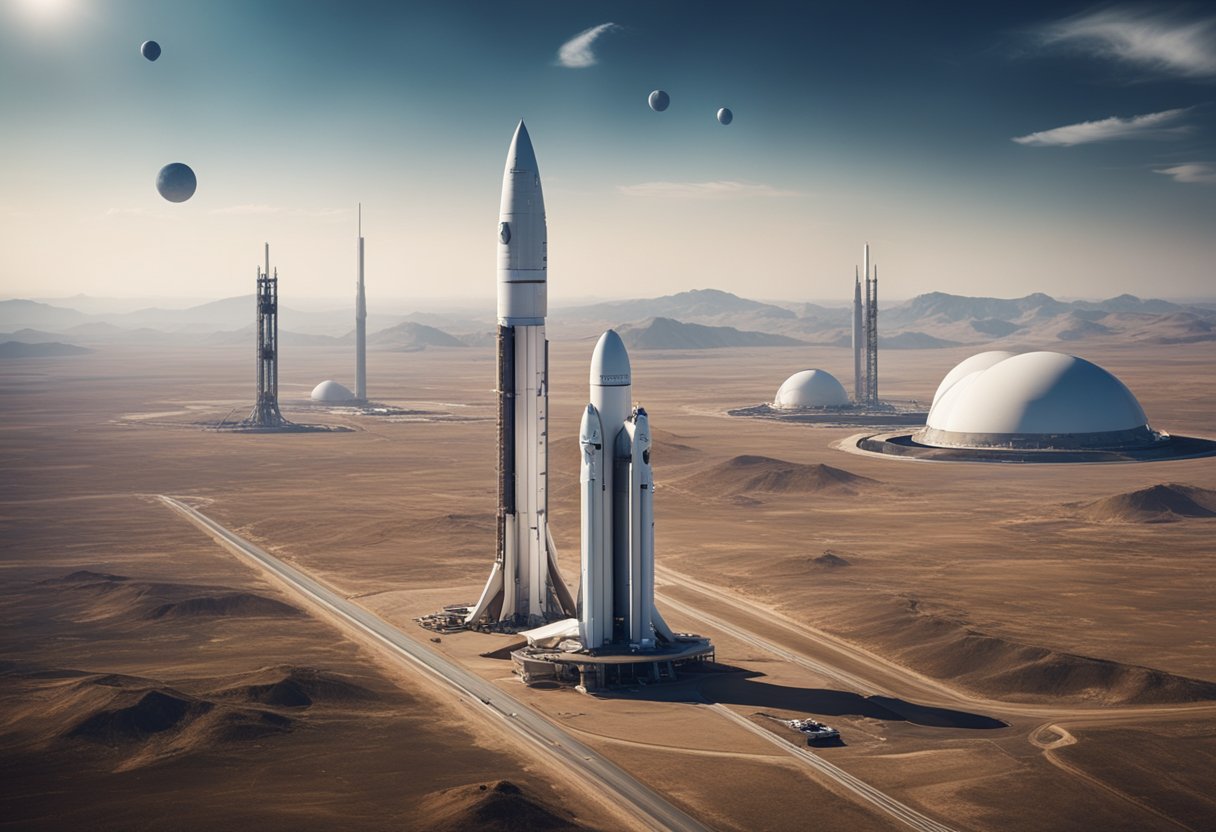
The frontier of space tourism is rapidly expanding due to breakthroughs in rocket technology and spacecraft design. We are witnessing a shift from traditional agency-led strategies to a more diversified, commercial sector where private entities like United Launch Alliance and Rocket Lab are taking the stage.
Our current era of space exploration is marked by significant innovations in spacecraft design. Reusability has become a central focus, with companies such as SpaceX revolutionising the field with their Falcon rockets. Rocket Lab follows suit, working towards reusable rocket boosters to reduce costs and increase launch frequency. On the other hand, advancements in space shuttle technologies aim to bridge the gap between Earth and the cosmos, making space travel more accessible to non-astronauts.
Looking ahead, the prospects for space tourism are expansive. Initiatives like Space Voyage Ventures offer a glimpse into a not-so-distant future where space journeys are part of our travel options. The United Launch Alliance plays a crucial role, providing reliable launch services with their Atlas and Delta rocket families. As tech continues to evolve, we expect to see a variety of launch sites around the world catering to a growing demographic of space tourists.
In this section, we’ll guide you through some valuable resources for deepening your understanding of space tourism, including educational materials and websites with interactive elements. These tools can help you gain a better grasp of what space tourism entails and what the future might hold for this exciting field.
Spaceport America: Learn about the Gateway to Space with comprehensive insights into the home of commercial space flights. Here, Virgin Galactic is preparing to take tourists into space, setting the scene for future space travel.
NASA’s Launch Services Program: Discover how NASA orchestrates the launch of rockets transporting observational and exploratory spacecraft. This includes probes that study our Earth, venture to other planets, and understand the broader universe.
SpaceVoyageVentures.com: Our pioneering website covers current, forthcoming, and potential space tourism journeys. It documents the evolving landscape of space exploration experiences available to the public.
To interact with our content, create a CNN account to log in and enjoy a personalised experience, with the option to log out anytime. Customise your journey through space exploration in the account settings, or dive into my account settings to explore a selection of science-themed videos.
Each of these resources provides a distinctive perspective and learning experience for those of us eager to understand space tourism’s possibilities and current reality. Use them to expand your knowledge and stay informed of the latest progress in the industry.

In this section, we address common queries on optimal space launch locations, public access to spaceports, industry leaders in space tourism, finding launch schedules, the impact of geography on spaceport operations, and how space tourism influences the cost of reaching space.
An optimal location for a space launch is chosen based on the Earth’s rotation, required orbital mechanics, and safety considerations. Equatorial launch sites enable rockets to take advantage of the Earth’s rotational speed, while clear flight paths over open water mitigate risks.
Yes, certain space launch sites are open to the public. For instance, the Kennedy Space Center offers tours and is a popular destination for witnessing launches. You can find comprehensive information on visiting these sites at the Federal Aviation Administration’s FAQs.
Companies like SpaceX, Blue Origin, and Virgin Galactic are at the forefront of providing space tourism services. They are making strides in developing commercial space travel to enable tourists to experience space.
For the latest updates on rocket launches and their locations, visiting websites like Space Tourism Guide is beneficial. Additionally, the forthcoming SpaceVoyageVentures.com aims to document future and currently available space tourism trips.
The geographic location of a spaceport is critical; proximity to the equator is advantageous for fuel efficiency. Additionally, spaceports are typically sited in locations with low population density for safety and to reduce noise impact, affecting operational schedules and frequency.
Space tourism impacts the cost of accessing space by bringing competition and fostering innovation in the sector. As more companies enter the market and technologies improve, costs are expected to decrease, making space access more economical over time.